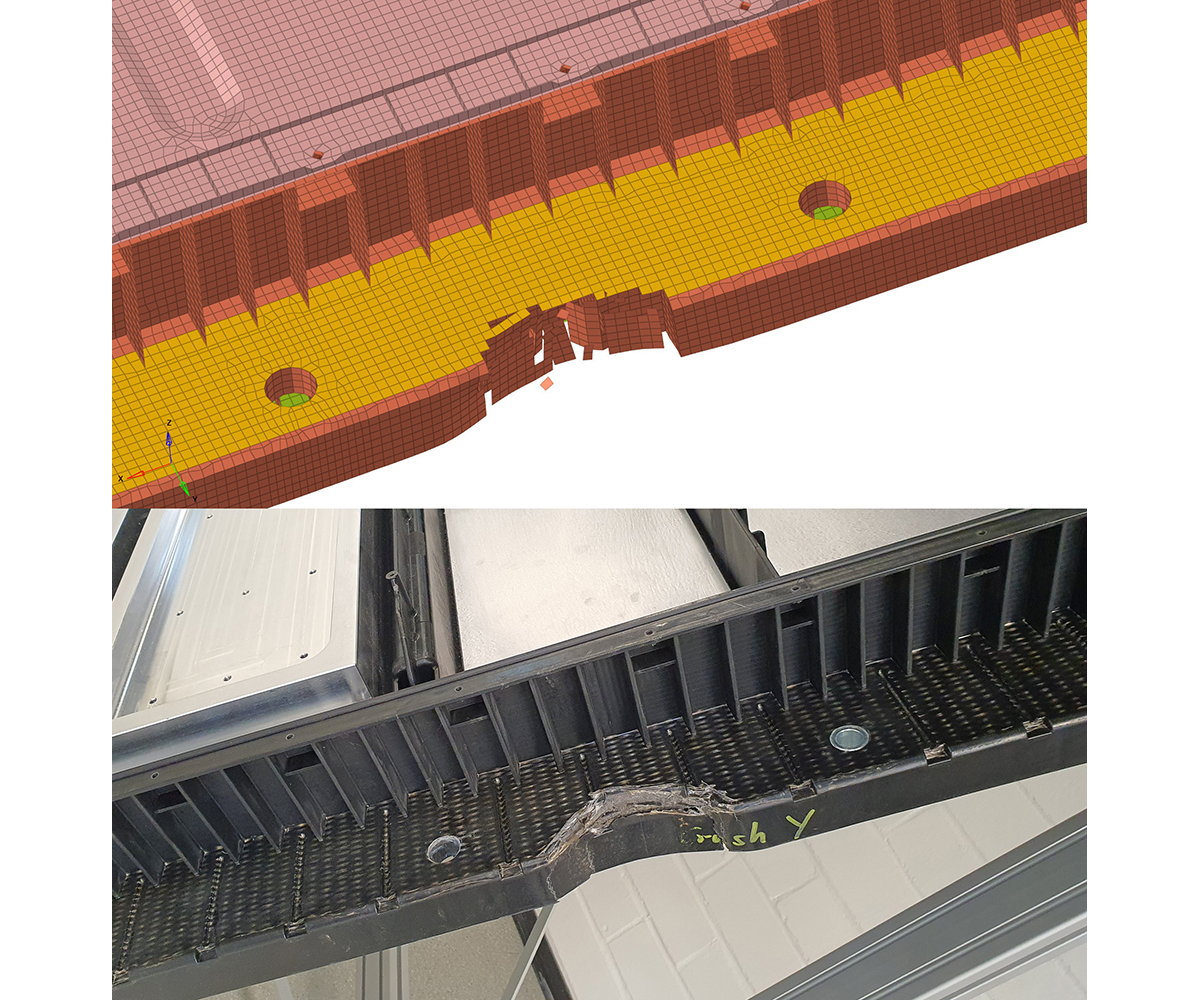Chemical provider LANXESS and automotive supplier Kautex Textron say they have proven the feasibility of the plastic polyamide 6 for high-voltage battery enclosures in EVs.
The companies jointly developed a 1.4-meter demonstrator composed of a polyamide 6-based composite called Tepex dynalite 102-RGUD600 in crash-relevant areas, along with the polyamide 6 compound Durethan B24CMH2.0. Kautex Textron engineered, designed and manufactured the demonstrator.
“Calculations revealed that the carbon footprint of the plastic enclosure is over 40 percent smaller compared to an aluminum design,” says Project Manager of e-Powertrain at LANXESS Dr. Christopher Hoefs. “The lower energy use in the production of polyamide 6 compared with metal as well as other factors—such as the omission of time-consuming cathodic dip painting to prevent corrosion where steel is used—help to minimize the carbon footprint.”
“The near-series demonstrator passes all mechanical and thermal tests that are relevant for such enclosures,” says Hoefs. “Also, solutions for the thermal management and leak tightness of the enclosure, for example, have been developed. This all has proven the technical feasibility of these safety components, which are complex and subject to high levels of stress.”
LANXESS also says “an enclosure prototype is being road-tested in a test vehicle to verify its suitability for daily use.”
“We are currently jointly tackling the first series-production development projects with automotive manufacturers in order to implement the new technology in series production,” says Director of Product Development at Kautex Textron Felix Haas.
Source: LANXESS

oral lasuna – lasuna buy online purchase himcolin pills
generic neurontin 800mg – order sulfasalazine online cheap azulfidine 500 mg
besivance where to buy – sildamax where to buy sildamax pill
probalan price – buy etodolac 600 mg purchase tegretol online
buy celecoxib 100mg generic – cheap flavoxate generic buy generic indomethacin 50mg
diclofenac generic – aspirin price aspirin 75mg canada
rumalaya canada – order elavil 10mg generic buy endep 50mg pill
order mestinon 60mg – buy mestinon 60 mg order imuran 25mg generic
buy generic lioresal – buy piroxicam 20 mg online order piroxicam 20mg online
voveran drug – cheap voveran sale buy nimodipine pills for sale
order periactin – buy tizanidine 2mg online cheap purchase tizanidine pill
buy meloxicam 15mg without prescription – buy ketorolac no prescription oral toradol
cefdinir 300 mg pill – cleocin brand cleocin generic
purchase artane generic – cheap artane pill purchase voltaren gel cheap
absorica pills – buy dapsone pills order deltasone 40mg sale
deltasone 5mg cheap – order permethrin without prescription cheap permethrin
purchase acticin cream – retin sale order retin cream online
brand betamethasone 20gm – benoquin online order generic benoquin
metronidazole 200mg without prescription – buy cenforce 100mg sale buy cenforce
buy generic clavulanate for sale – order augmentin 1000mg generic buy levothroid online cheap
clindamycin without prescription – buy cleocin without a prescription generic indocin 75mg
purchase losartan – buy keflex 125mg generic keflex 125mg canada
purchase eurax for sale – bactroban ointment over the counter cheap aczone
buy provigil 200mg online cheap – buy provigil online cheap melatonin 3 mg ca
buy generic bupropion 150 mg – orlistat 60mg generic buy shuddha guggulu no prescription
capecitabine 500mg ca – purchase naproxen online danazol 100 mg cost
buy progesterone without prescription – order generic fertomid buy clomiphene generic
buy generic fosamax 70mg – purchase medroxyprogesterone pills order provera online cheap
aygestin canada – order yasmin for sale cheap yasmin without prescription
estradiol order online – anastrozole order anastrozole 1 mg price
order generic dostinex – buy dostinex cheap buy generic alesse for sale